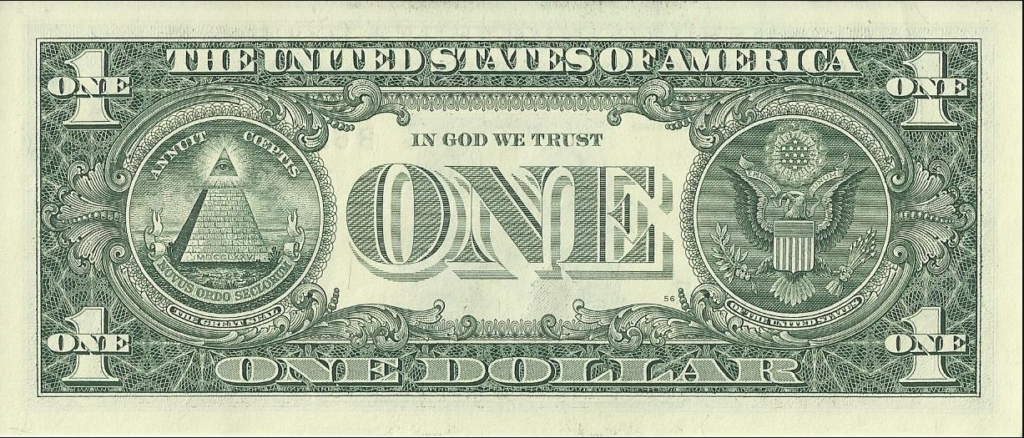The US Dollar (USD) holds its ground to start the new week. The US Dollar Index (DXY), which tracks the USD’s valuation against a basket of six major currencies, stays in positive territory above 104.00 after gaining more than 0.5% on the back of the upbeat May jobs report from the US on Friday.
In the second half of the day, the USD’s valuation could be affected by the ISM’s Services PMI report for May. Markets expect the data to reveal an ongoing expansion in the service sector’s business activity while forecasting another month of solid input inflation. It’s also worth noting that the US Census Bureau will release the Factory Orders data for April.
Daily Digest Market Movers: US Dollar Builds On Friday’s Gains
- The monthly data published by the US Bureau of Labor Statistics (BLS) showed on Friday that Nonfarm Payrolls rose 339,000 in May. This reading surpassed the market expectation of 190,000 by a wide margin. April’s reading of 253,000 also got revised higher to 294,000.
- The underlying details of the labor market report revealed that the Unemployment Rate climbed to 3.7% from 3.4% in the same period. The Labor Force Participation rate remained unchanged at 62.6%, while annual wage inflation, as measured by the change in Average Hourly Earnings, edged lower to 4.3% from 4.4%.
- Commenting on the US jobs report, “Is the US economy experiencing a soft landing? According to the latest Nonfarm Payrolls, the job market is slowing down to a “Goldilocks level” – not too hot nor too cold,” said FXStreet Analyst Yohay Elam. “For markets, it means ongoing growth but with lower inflation and interest rates. For the US Dollar, the path of least resistance is down.”
- The benchmark 10-year US Treasury bond yield snapped a five-day losing streak after the US jobs report and rose nearly 3% on Friday. The 10-year yield stretches higher and stays in positive territory above 3.7% on Monday, supporting the USD.
- Despite rising US yields, the CME Group FedWatch Tool shows that markets are still pricing a more than 70% probability of the Federal Reserve (Fed) leaving its policy rate unchanged at the upcoming meeting.
- “There are likely enough pockets of softness in this report for the FOMC to pass on raising rates at the next meeting, though another strong payrolls gain in June, coupled with another disappointing inflation report, could set the stage for a rate increase in July,” economists at the Bank of Montreal said regarding the potential impact of the labor data on the Fed’s policy outlook.
- US stock index futures trade mixed in the European session. The S&P 500 Index gained over 1% on Friday as markets cheered strong jobs figures.
Technical Analysis: US Dollar Index Turns Bullish After Recent Upsurge
The US Dollar Index (DXY) broke above 104.00 on Thursday, where the Fibonacci 23.6% retracement of the November-February downtrend is located. Confirming the bullish tilt in the near-term technical outlook, The Relative Strength Index (RSI) indicator on the daily chart climbed above 60.
104.50 (static level) aligns as the first resistance for DXY ahead of 105.00 (psychological level). A daily close above the latter could bring in additional buyers and open the door for an extended rebound toward 105.60 (Fibonacci 38.2% retracement, 200-day Simple Moving Average (SMA)).
On the downside, bearish pressure could increase if DXY drops below 104.00. In that scenario, 103.50 (static level) could be considered initial support before 103.00 (100-day SMA).
How Does Fed’s Policy Impact US Dollar?
The US Federal Reserve (Fed) has two mandates: maximum employment and price stability. The Fed uses interest rates as the primary tool to reach its goals but has to find the right balance. If the Fed is concerned about inflation, it tightens its policy by raising the interest rate to increase the cost of borrowing and encourage saving. In that scenario, the US Dollar (USD) will likely gain value due to decreasing money supply. On the other hand, the Fed could decide to loosen its policy via rate cuts if it’s concerned about a rising unemployment rate due to a slowdown in economic activity. Lower interest rates are likely to lead to a growth in investment and allow companies to hire more people. In that case, the USD is expected to lose value.
The Fed also uses quantitative tightening (QT) or quantitative easing (QE) to adjust the size of its balance sheet and steer the economy in the desired direction. QE refers to the Fed buying assets, such as government bonds, in the open market to spur growth, and QT is precisely the opposite. QE is widely seen as a USD-negative central bank policy action and vice versa.


This Post Has 4 Comments
Benötige ich zur Aktivierung des Willkommensbonus einen Löwen Play Bonus Code?
Sämtliche Transaktionen werden sofort bearbeitet.
Die genaue Anzahl der zugeschriebenen Freispiele hängt von der
Höhe Ihrer Einzahlung ab. Was beinhaltet der Willkommensbonus
im Löwen Play Casino? Die Casino Lobby wird von elf leistungsstarken Software Studios beliefert, die für eine starke Qualität
der Spiele sorgen.
Die Löwen Play Online Spielothek ist nicht einfach aus dem
Nichts entstanden, sondern das Unternehmen dahinter hat eine lange Historie in der Branche und wurde schon 1949 gegründet.
Beauftragen Sie beispielsweise online ganz bequem Upgrades
und Spiel-Paket-Erweiterungen für Ihre NOVOLINE-Geldspielgeräte.
Das LÖWEN-Kundenportal bietet Ihnen vielfältige Funktionen zum Management Ihrer
Produkte aus dem Hause LÖWEN ENTERTAINMENT.
References:
https://online-spielhallen.de/lukki-casino-mobile-app-dein-ultimativer-leitfaden/
**tonic greens**
tonic greens is a cutting-edge health blend made with a rich fusion of natural botanicals and superfoods, formulated to boost immune resilience and promote daily vitality.
**mindvault**
mindvault is a premium cognitive support formula created for adults 45+. It’s thoughtfully designed to help maintain clear thinking
Explore the ranked best online casinos of 2025. Compare bonuses, game selections, and trustworthiness of top platforms for secure and rewarding gameplaycrypto casino.